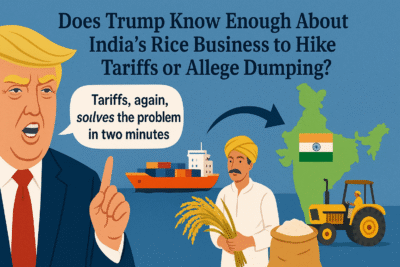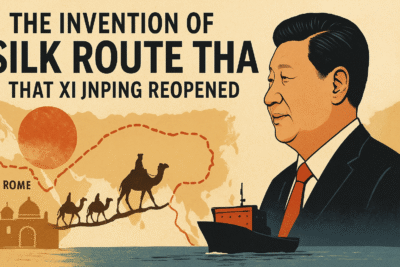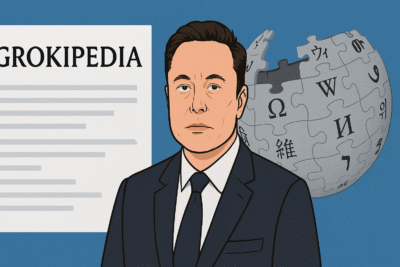

Reading news about economy revives the pedantic fear of mathematics among the grown-ups that they battled during their school days. India’s budget, in particular, can often be a confusing exercise that creates the sense of that proverbial little man.
But basically, a budget that a government presents in the legislature is a layout or plan or estimation of revenue or earnings and expenditure.
Typically, a budget talks about the figures of three years. The year, here, differs in India from the one our calendars display. The year begins from April 1 and ends on March 31. So, any year’s budget will throw at you figures of three years — estimates for the next year, revised estimates for the current year and the actual estimates of the previous year.
So, in 2024, the budget presents the estimates for April 2024-March 2025, revised estimates for 2023-24, and actual estimates for 2022-23.
Through the speech of the finance minister presenting the budget, there are several words and phrases that often don’t make any sense to, say, a person challenged in academic economics. They look so intricate and convoluted that the word “budget” puts them off. The monologue of the finance minister — though no longer a monologue because the rival legislators keep shouting an equally incomprehensible jargons — makes the experience ever more tedious and frustratingly boring.
But a budget can be understood. And in a much simpler way. I have never actually figured out why the language of legislation, law, and finances that concern the masses the most is constructed in a manner that only classes can decode and understand. Yet, for a layman like me, the budget can be decoded by deciphering a few words and phrases.
The budget is a balancing act. The most important balancing work happens with deficits. There are three deficit numbers that we should be looking for in a budget speech or document. The entire budget math depends on these four deficits — revenue deficit, fiscal deficit and primary deficit. Some people might tell you about the fourth deficit — effective revenue deficit. We will deal with it as well. These deficits are found in every budget documents; even the summary or “budget at a glance” documents that are released every year for easy understanding of the public.
These deficits hold value — worrying or joyful — are expressed in terms of the GDP, which stands for gross domestic product and which means every computable work that led to creation of money in the year for which budget is being considered. If you sell a packet of popcorn, you are adding to India’s or the country of your residence’s GDP. But if you grow sugarcane on your farm using your family-stored seed, putting family labour and domestic manure, and consume within the family, you are not contributing to the GDP because it involved no money-making.
The GDP is calculated on two bases — nominal and constant prices. Nominal means the current value. At constant price, it means that the value of the currency of the said year would be considered and a lot of pluses and minuses would be done to arrive at a final figure.
The most crucial — because it is the most-talked about — deficit is the fiscal deficit. This means that the government is spending more than it is earning.
This is not a happy situation for a person or a nation. If it is higher as percentage of GDP, it is a bigger problem. India has passed a law that says that the central government can’t have a fiscal deficit in excess of 3%. But currently, it is nearing 6%. This means the government has spent much more than it has earned.
This means the Indian government’s debt burden has increased in terms of the percentage of the country’s GDP.
The higher the fiscal deficit means the higher borrowings from the market. When we say market, this means agencies that could be national or international. At a certain level, if the government is borrowing more, it would mean that lesser funds are available for the private sector to borrow from the market.
Higher borrowing by the government is often seen when the economy slows down. In a country, where the private sector is heathy and functioning, an economic slowdown comes when people don’t have enough money to buy their produce. This results in lower manufacturing by the private sector factories. This means lower labour requirements — or layoffs. This further reduces the purchasing power of people as a whole. This also means that less number of people are required to sell the products. This leads to further curtailment of people employed in services — offices, hotels, restaurants, buses, airlines, cinemas etc. This reduces the purchasing power further. This becomes a vicious cycle.
To stop or break this cycle, the government increases its expenditure. But slowdown also means lower tax revenue. So, the government borrows money from the market, other governments or international organisations. This creates a deficit — the fiscal deficit. If this situation persists for long, the government or the country’s credibility (we call it credit score in individual cases) declines. And there are very big agencies that give their verdicts on a country’s economic credibility.
If they lower the credit ranking, borrowings or loans become costlier for such countries. This means that the country has to spend more money from its tax revenue to pay the interest on the loans taken. We call it servicing the debt. This is a complete waste of national earnings because it is paid to pay back the interest. If a country reaches a stage where it does not earn enough money from the taxes paid by its citizens and businesses, it is said to have fallen into an economic crisis or collapse.
To manage such affairs, the governments usually make a three-tier policy — short-term, medium-term and long-term. This is an expert job and so it doesn’t bother us, the laypersons.
The revenue deficit is simple. If the actual revenue collection falls short of the estimated number presented in the budget, there will be a revenue deficit. This also means revenue expenditure exceeds revenue income. Revenue expenditure is the money a government needs to spend on its daily affairs — salaries etc — in a given year. Revenue earning is the money that it collects from its citizens and businesses in that year.
And, primary deficit is same as the fiscal deficit but after we subtract the interest amount paid on borrowings.
These are all interlinked. Simply put, the government has to finance its deficit. Or, since the government finances the shortfall, it creates all types of deficits. One may wonder why does the government then plan such a budget that requires borrowing? Why can’t the government plan as per its revenue collection? This is a difficult question. Suppose, a man earns Rs 10,000 a month. He has his dependent parents living with him. He spends all Rs 10,000 every month on his household.
Some time later, he marries a woman, who comes a homemaker. Now, there are four people. Since he was spending all the money, he did not have enough savings. Now, their per capita income has reduced. Since nobody else earns money or brings revenue to their home, his finances are stretched more than before. He is not taking loans. This means, he has become poorer.
As nature would have it, he becomes the father of a baby. Even now, if he does not borrow money — finds a higher-paying job — what would happen to him?
To escape this man’s predicament, the government-sized man borrows money, creating deficit or financing deficit. This borrowed money helps the government keep the GDP size (man’s Rs 10,000) growing — by a certain percentage point. Anything above 6 percentage point is considered good for a country like India. The US can’t think of growing at a similar rate. Its GDP base is too high for that. In India, a Bihar or a Jharkhand can grow at 10% rate but Maharashtra or Gujarat would struggle to achieve that growth rate.
Another term that is bombarded is capital expenditure. Capital simply means something that is a long-term investment to generate money, wealth or produce beyond the year of investment. In contrast to revenue expenditure, which is for the consumption during the year of spending, a capital expenditure is for many more years. Compare salary expenditure to establishing a factory to produce mobile phones.



